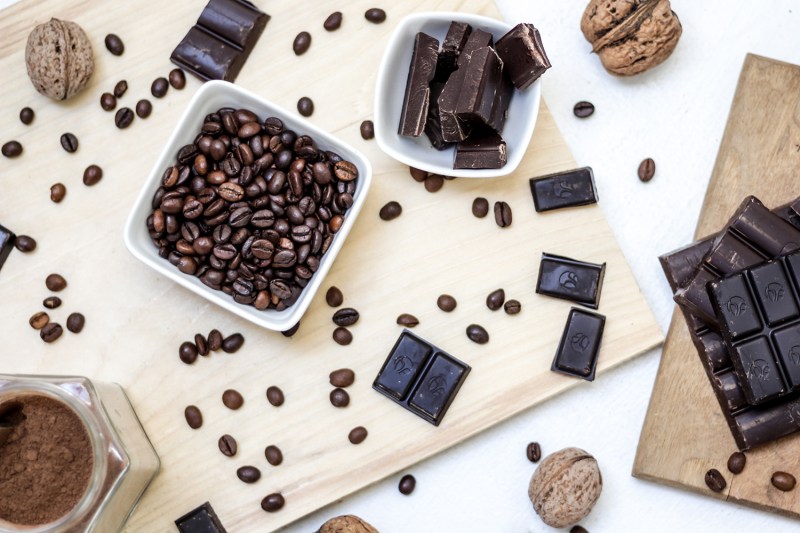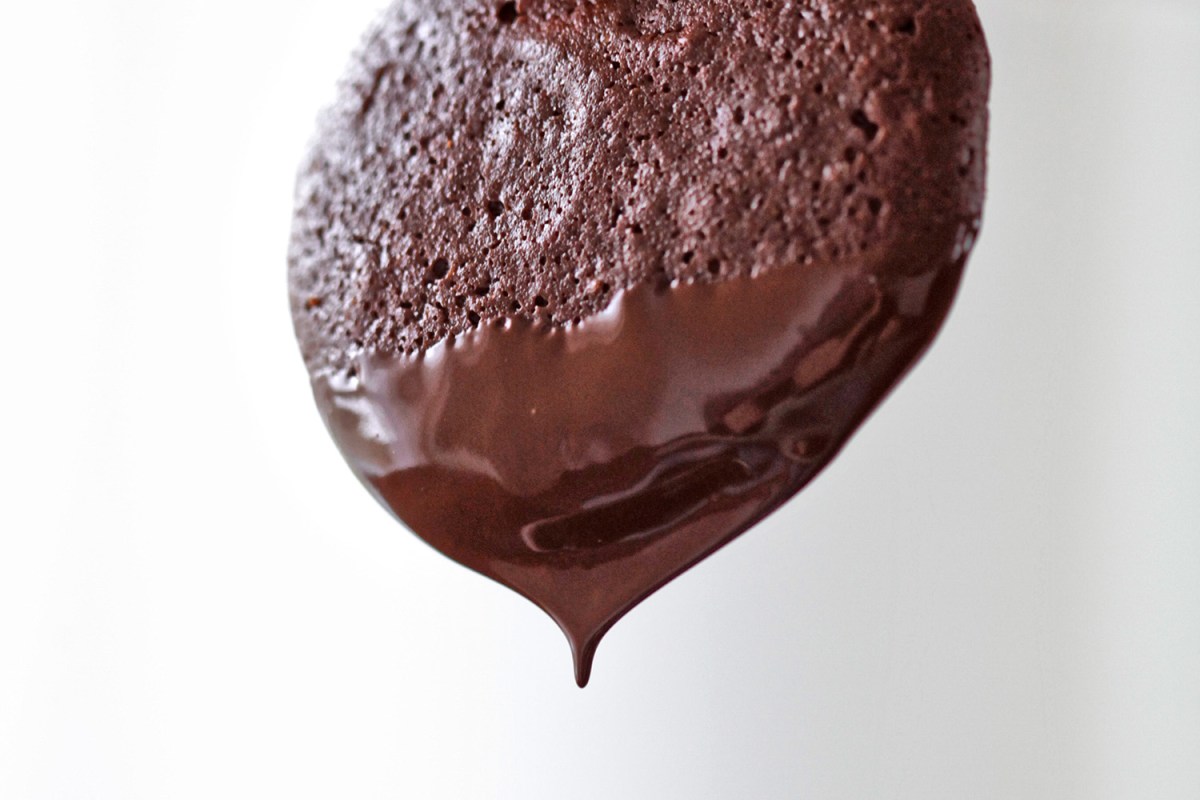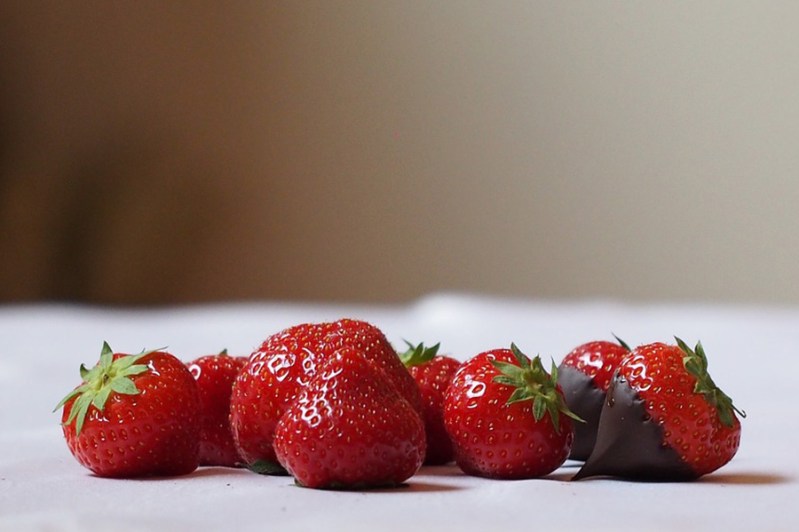In the canon of desserts and sweets, more often than not, a sole treat rises above the rest. That delicious treat? Chocolate, of course! Not only is the popular sweet substance practically unavoidable when a certain holiday in February rolls around, but during just about any other holiday, too, you’ll be able to find all manner of things made of, dipped in, or generously covered by chocolate. All this cocoa-overload got us thinking: What is it that makes chocolate so darn tasty? On a chemical level, why do so many people love it so much? For more info on the science of chocolate we turned to Thierry Muret, executive chef chocolatier at Godiva.
The Sweet Science of Chocolate
As a lifelong science-lover (he graduated college with degrees in chemistry and crystallography), Chef Thierry doesn’t just love chocolate for its sweet flavor. “Chocolate is extremely sensual,” Thierry says, “because it’s a very complex food. There are 300-plus different aromatic molecules in cocoa beans — it’s pretty complex.”
This chemical complexity can teach us a lot about the way we, as humans, interact with and react to the magical little cocoa bean. “In the cocoa beans, you have dopamine, phenylethylamine, caffeine, and anandamide,” Thierry explains. “Anandamide is actually a happy neurotransmitter in your brain; it’s called the bliss molecule. So the anandamide makes you feel blessed, makes you feel happy, makes you feel good. It is naturally in your brain, but is only active in your brain for a short period of time. It seems that … when you eat dark chocolate, you retain those anandamides longer … and the caffeine is giving you energy.”
You’ve probably heard about the idea of the “bliss molecule” before (or at least the idea that eating chocolate can give you a happiness boost), but Chef Thierry is quick to point out that the idea of chocolate as a scientific trigger for contentment can often be misleading. “A lot of research is done and has been done on the components of chocolate and the classification of our behavior when we eat it, but these components are actually at trace levels, so you need to eat a lot of chocolate to actually have the total effect of it.”
Okay, so chocolate isn’t going to cure your depression the way some hopeful individuals may like to claim, but that doesn’t mean these trace chemical compounds are useless in small quantities. Chocolate does, after all, tend to be historically associated with moments of happiness and celebration, and with a little lesson in gastronomy, you can take advantage of chocolate’s chemical makeup to create dishes and flavor combinations that are surprising, satisfying, and downright delectable.
Understanding How Chocolate Pairs with Food
Before you start planning out this year’s romantic spread, it’s helpful to understand the differences between varieties of chocolate. “On a molecular standpoint,” Thierry says, “it’s not so much differences, because milk and dark chocolate, and white chocolates, are produced from the same start, which are the cocoa beans. Dark chocolate is cocoa beans preserved in vanilla, but milk chocolate is cocoa with milk powders, sugar, and vanilla. So you see, you’re actually diluting the effect that you could have from the cocoa beans. It’s not so much the differentiation in chemical components between the two, it’s actually the dilution of the chemical components and the addition of other ones.” Recognizing these subtle but impactful differences in the dilution of dark chocolate vs. milk chocolate can help you not only understand the variety of chocolate flavors but also how to pair your chocolate of choice with other foods.
“Dark chocolate is cocoa beans preserved in vanilla, but milk chocolate is cocoa with milk powders, sugar, and vanilla.”
“You hear a lot about pairing, right? Pairing this, pairing that. [But] for me, you have two drastic differences: you have food association and you have pairing. [They’re] drastically different. Food association is historical. You know, you’re going drink white wine with fish, or you’re going to put cinnamon with apples. It’s historical, it’s traditional. Those are food associations,” Thierry explains. “When you talk about pairing, you’re actually entering the molecular gastronomy world … where chefs go deeper into their ingredients to really understand what [they] are on a molecular level and start pairing them.”
“When you eat food, you have the taste and you have the aroma. It’s only your tongue that can perceive your five basic tastes: sweet, sour, bitter, salt, and then the fifth one is the famous and infamous umami,” Thierry says. Playing on these characteristics in new, interesting, or thoughtful ways is what can elevate a dish from dull to delectable.

“What you really want to do in the basic taste is actually to complement,” Thierry elaborates. “An example of that is coffee. If you’re a coffee drinker as I am, depending on your tolerance of bitterness, which is the basic taste, you’re going to add sugar or not. What you are really doing there is … complementing one basic taste with another: because your tolerance is low on the bitterness, you want to compensate by adding a sweet item.”
Food association is historical … When you talk about pairing, you’re actually entering the molecular gastronomy world.”
Though it can seem like the main concern, taste isn’t the only thing to consider when deciding which foods to pair. Although we often think of our sense of smell as being far worse than most of the animal kingdom, when it comes down to the science of it all, humans can actually distinguish between thousands upon thousands (potentially up to a trillion, according to a paper published in 2017) of distinct aromas. Knowing that, it stands to reason that aroma is a key factor in successful food pairings. “In the aromatics, what you’re trying to do when you’re assessing is to find ingredients that have some similar or identical molecules. So taste, you are trying to balance, and with the aromatics, you’re trying to find similarity,” Thierry explains.
Once you have the science of taste and aroma down, there’s just one more critical consideration to complete the trifecta. “Humans are extremely attracted by texture,” says Thierry. “They eat their food to texture. You [may] hear humans saying, ‘This is a boring dish.’ I’ve heard that many times [and] generally it’s because you don’t have a contrast of texture on the plate. The best example I can give of that is baby food. It’s all one texture. It’s a very healthy food, it’s very nutritious, but it’s extremely boring because you don’t have a contrast of textures.”

Sure, you can pop the top on a can of chocolate frosting, grab a spoon, and probably have yourself a pretty nice evening right there — after all, it’s still sweet, sweet chocolate. But to create a more memorable (and significantly less shameful) experience, your dish should show equal consideration to taste, aroma, and texture.
What to Pair with Chocolate
Molecular gastronomy has been everywhere over the past couple of decades, so if you want to get down into the nitty-gritty of food science, a bounty of resources are at your disposal — but you don’t have to go back to school for a chemistry degree to pull off some successful pairings at home. To get a better understanding of how these three elements of food pairing work together, look no further than one of the most timeless romantic treats: chocolate dipped strawberries.
“With dipped strawberries, you have the perfect example of pairing,” says Thierry. “The softness of the strawberry with the crispiness of the shell [and] the bitterness of the dark chocolate with the sweetness of the strawberry.” The delectable little cocoa-coated fruits also exemplify a similarity in aromas, with strawberry’s fruity and super-subtle “roasted” aromas reflecting similar sweet and earthy scents in chocolate. Pair the beloved dessert with a couple flutes of Champagne — whose green apple aroma mirrors the fruity scent of strawberry — and you’ve got a simple finale that is as balanced and romantic as you and your significant other.

You don’t have to limit your chocolate pairings to the classic desserts, either. By using chocolate in smaller quantities and more unexpected ways, you can create a full multi-course dinner that will hint at the sensual dessert to come throughout the meal. “You can do salads with chocolate, absolutely gorgeous salads,” Thierry suggests. “You can do, for example, a spinach pear salad with a chocolate vinaigrette.”
The sweet surprises can extend into the main course with cocoa-powder added to zesty rubs for your protein of choice. “You can do ahi tuna with a spiced cocoa rub. Again, it’s all about balance. You can put a little bit of heat to your rub to complement a little bit of the blandness of the ahi tuna. It could be chili powder, cocoa powder, a little black pepper … if you can find it, you can even go into pink pepper which is a little bit more floral … and so you’re incorporating the grand finale of your dessert into your meal.”
To truly create an experience of togetherness and romance, the concept of balancing your flavors shouldn’t be limited to one dish; instead, look at the bigger picture and consider the overall balance of the entire meal as well. “You need to have a continuum in the overall delivery,” Thierry advises. “You can have a glass of wine [before dinner], and in the dinner, you’re serving hints of what the grand finale is. And then the grand finale … you don’t have to go into baking a dessert. It can be … a cup of coffee and a box of chocolates, or a glass of port, a wine that goes very well with dark chocolate. Chocolate is a small indulgence … it’s a little taste that you can share with your partner. It’s way more delicate and personal and exchanging than just ‘Oh, here’s a piece of dark chocolate.’ Sit down, enjoy the conversation, bring the Champagne out. You’re opening up the conversation around the food.”
Article originally published February 8, 2018. Last updated May 6. 2019.






